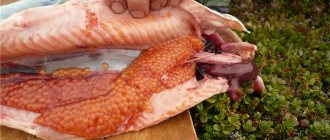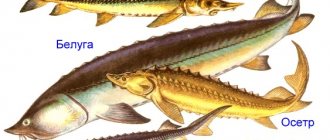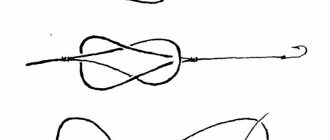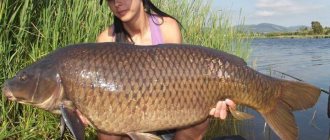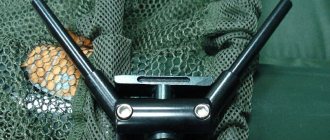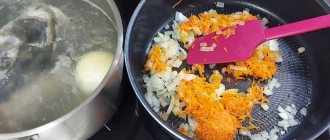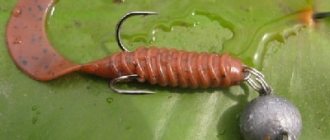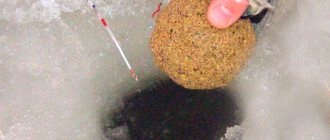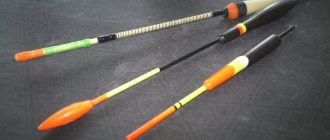Trout is a name that summarizes several forms and species of fish of the salmon family. It belongs to the valuable commercial species and is an object of increased interest from fans of sport fishing and ordinary fishing enthusiasts. Trout fishing is a rather difficult process that requires certain skills and experience.
How do you prefer to cook trout?
- Bake 78%, 1959 votes
1959 votes 78%1959 votes - 78% of all votes
- Grilled 11%, 289 votes
289 votes 11%
289 votes - 11% of all votes
- Fry 5%, 135 votes
135 votes 5%
135 votes - 5% of all votes
- For a couple 3%, 84 votes
84 votes 3%
84 votes - 3% of all votes
- Extinguish 2%, 57 votes
57 votes 2%
57 votes - 2% of all votes
Total votes: 2524
15.12.2019
×
You or from your IP have already voted.
Trout fish - description
Trout fish is very beautiful, no one can argue with that. Its powerful spindle-shaped body is slightly compressed on the sides and is completely covered with small round spots, which can be white, red or black. The back is most often olive in color, slowly fading to coppery yellow on the sides. The belly is always lighter than the back. In general, the color can be anything, it depends on the living conditions (for example, the color of the water). There are very light representatives of this species, living in clean reservoirs with clear water, or, on the contrary, dark ones, adapting to the muddy bottom. The color of the fins follows the color of the body: the dorsal ones are dotted with numerous dots, the abdominal ones are lighter. During the spawning period, temporary changes in appearance are possible: the acquisition of a darker shade, the disappearance of spots, and others.
The head seems too small against the background of the massive body. Like all other pronounced predators, the trout's mouth is full of teeth that look like bristles. There are two rows of them, plus several on the oral bone. Interestingly, males have more teeth, but they themselves are smaller than females. Some individuals grow up to 1 meter in length and can gain weight of about 20 kg, but this is rare and only possible under certain conditions. The Caspian trout boasts these parameters; it is the largest. In most reservoirs, the size of this fish is quite modest: length - 30-40 cm, weight - 400-500 g. However, even such a “trifle” can tear fishing lines and break the tips of fishing rods.
Salmon and trout, what's the difference?
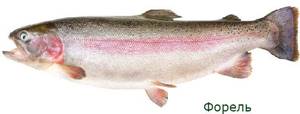
Most often, this question is asked when comparing salmon with large species of trout (rainbow, brown trout), since there are indeed some similarities between the fish. Both species belong to the “red fish” of the salmon family and are valued for their excellent gastronomic qualities and beautiful pink meat. However, it is not difficult to distinguish these fish:
- Salmon surpasses its opponent in size; its adult specimens often reach a length of 1 meter, and sometimes specimens are found under one and a half meters. The largest trout of all its existing species is smaller in size and never reaches a meter in length.
- The salmon's head is larger and has a more pointed snout.
- The color of salmon is lighter, silvery with dark small spots and there is no beautiful “signature” pink stripe along the body, like trout.
- Salmon fins are larger and elongated.
- Salmon scales are much larger.
- Trout meat has a reddish tint; in salmon it is closer to orange.
- When salted, trout meat is softer, but less fatty. However, if you use first-class raw materials for salting trout, you may not be able to distinguish it.
Recommended reading: How to catch a large crucian carp
During heat treatment, the red-pink color of salmon meat is preserved, while that of trout becomes less saturated.
Variety of species
There are many species and subspecies of trout, which belong to three genera. Scientists call them Salmo - noble salmon, Oncorhynchus - Pacific salmon, and Salvelinus - char. There are 3 varieties of this fish found in our country. This is trout:
- rainbow;
- lake;
- brook
Let's look at them in more detail.
Rainbow trout
Rainbow trout (mykiss) received this name due to its unique color.

On the sides of adult specimens there is a bright longitudinal stripe, making the fish incredibly beautiful. Today it is the most common inhabitant of paid lakes and ponds in Russia, but it came to us relatively recently, about 100 years ago. At the beginning of the 20th century, the rainbow beauty was brought from North America, which is considered its homeland. Now it is a popular object of commercial, recreational and sport fishing. In addition to beauty, she has incredible strength. Once on the hook, it puts up violent resistance, makes unexpected and rapid jerks, and makes candles. Sports competitions for catching it are held everywhere.
lake trout
Lake trout (Karelian, brown trout) are found in cold water bodies of the Kola Peninsula, Karelia, the Caucasus, and in the mountain lakes of Central Europe.

For the sake of procreation, she is able to climb up mountain rivers to a height of 1600 m above sea level. There are also anadromous forms that live in the Black, White, Aral and Baltic seas. Migratory brown trout enter rivers to lay eggs and then return to the sea to rest. In lakes, this schooling fish stays mainly at a depth, and quite deep - up to 100 m. Like the rainbow fish, it is a valuable object for artificial breeding. With a competent approach, 50 centners of selected fresh fish can be obtained annually from 1 hectare of reservoir.
What is healthier: salmon or trout?
In terms of fat content, trout is classified as a dietary fish; it contains approximately one and a half times fewer calories than salmon. People watching their own weight should take a closer look at this fish. Despite the high fat content of salmon, its meat is rich in polyunsaturated fatty acids, in particular Omega-3. As you know, Omega-3 is a rather rare substance that our body cannot synthesize on its own.
On a note! Salmon dishes are very useful for people who have problems with the cardiovascular system, as well as for all older people.
It is impossible to say categorically which fish tastes better, trout or salmon. Here, as they say, there are no comrades according to taste. You just need to try and decide for yourself. Both representatives of salmon are highly valued in cooking and are suitable for preparing almost any fish dish. It is believed that trout has more tender meat and a more subtle, refined taste than salmon. But after freezing, it can easily lose these properties. It is better to buy it chilled or fresh.
One of the advantages of salmon is its large bones, which are easily removed from the meat.
Habitats
Regardless of the species, this fish always stays where it is cooler. That is, in places sheltered from the sun or at great depths. You won't find it in warm areas. Trout has a special requirement for water; it must not only be cool, but also clean and enriched with oxygen. In search of such conditions, trout flocks constantly move from one whirlpool to another and like to stand near waterfalls. In summer they find protection from the sun under large boulders or in fast currents.
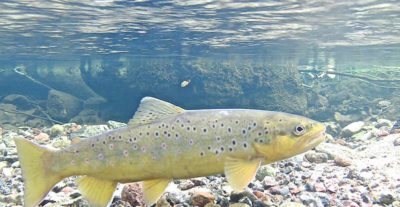
Rainbow trout, brought to us from the Pacific coast, also prefers clean, cold water with a temperature of no more than 20 degrees. Sunlight is also contraindicated for her, from which she hides among stones, in snags or at the bottom in deep places. It is the sun that most influences its activity. On cloudy days, this fish moves and feeds a lot, but on sunny days it is not easy to find. Another feature is its inability to live in bodies of water that freeze in winter. The fact is that this species needs to periodically fill its swim bladder with a portion of fresh air, and for this it needs to rise to the surface.
So, trout is afraid of the sun and warm areas of the reservoir, so experienced fishermen look for it:
- on the rapids, where the water simply does not have time to heat up;
- next to the gushing cold springs;
- where the reservoir is fed by streams flowing down (in mountainous areas);
- under boulders, snags and other objects at the bottom;
- on holes and depressions, including washouts under steep banks;
- at deep channel bends.
Things are somewhat different with artificially bred trout. As a rule, lakes and stakes are stocked with it, which often have a flat bottom and do not have the above-mentioned shelters. In this case, the fish can be dispersed throughout the entire area.
Fishing for trout of various types
Whatever time of year you go fishing, remember that hunting for trout requires special skill and dexterity, and you also cannot do without excellent knowledge of the reservoir; if you have all this, you can safely go to the river for a good catch.
Brook trout fishing
Especially popular among fishermen is brook trout, or, as it is popularly called, pied trout. This is perhaps one of the most beautiful representatives of its order; the body of the pied bird is painted with black and red spots and shimmers with the brightest colors of the rainbow. Fishing for brook trout requires the utmost precaution. You should fish by walking, that is, moving along the shore of a reservoir downstream, otherwise you risk scaring the fish, and it, in turn, by rising up, will scare away all its fellow tribesmen. Then you shouldn’t count on a good catch. It is also worth moving because after catching several fish in one place, others stop responding to the bait and leave the place that is dangerous for them.
Rainbow trout fishing
Catching rainbow trout does not require such careful camouflage from the fisherman; unlike pied trout, it is much less careful and timid. Fish of this subspecies are practically not afraid of either the tackle itself or repeated casts, but one cannot say that they are completely fearless - upon seeing a fisherman or his shadow, rainbow trout almost immediately disappears forever. This trout responds well to very bright, challenging baits; red and yellow fluffy flies made from bird feathers, as well as wobblers of similar colors, are especially attractive to it.
Fishing for lake and pond trout
Many fishermen are attracted to their shores by reservoirs rich in lake trout. The main feature of this species is that the fish are very attached to their habitat; having found a place where there is no shortage of food, they never swim away from there. Fishing for lake trout with a fly is one of the most popular and successful ways of hunting this fish; it is only important to correctly determine what type of flies the trout prefers in the body of water where you came to fish. There is only one universal piece of advice: you can fish with a dry fly or larva only in clean, transparent water, and if the water is still, then it is better to use a wet fly as a bait.
You can find pond trout in many cultivated reservoirs in central Russia, where there are small dams. The activity of the fish depends on the temperature of the water; the colder it is in the reservoir, the more active the fish, at this time it is not so picky about bait. Fishing for pond trout in warm water is most promising in the deep parts of the reservoir, where the fish climb to hide from the heat. And if you are planning to fish in a paid reservoir, find out in advance when and where the fish are fed, luck will visit you there, and with it a good catch.
River trout fishing
River trout fishing can be especially successful in fast water. This fish loves cool rivers with a good current, especially if there are rocky areas at the bottom. It is most often found where there is cover from submerged boulders or fallen trees.
Much of the success of trout hunting depends on how quickly the angler can adapt to the constantly changing behavior of these fish. Knowing the characteristics of a particular species, you can easily choose the most suitable fishing tactics, and a big catch will not keep you waiting long.
Features of behavior
Each variety of trout has its own habits, which depend on the habitat, weather conditions and other factors. The species inhabiting our rivers and lakes usually lead a sedentary life, but may make minor migrations within the reservoir. As a rule, movements occur during spawning, due to changing conditions or in order to find a better food supply.
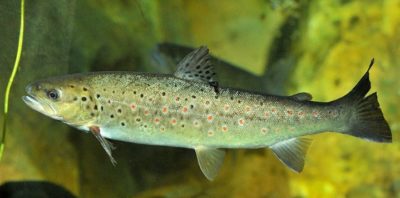
After spawning, trout return to their usual places, sticking to areas with rapids, springs, and deep depressions. In the cold season, it is almost constantly located in the bottom horizon. With the beginning of the spring flood, it emerges from the depths and moves closer to the shores in search of food. The arrival of the summer heat brings some adjustments to her life. Throughout the summer, this cold-loving fish has to seek refuge in whirlpools and under waterfalls or descend to a comfortable depth. There it remains until the first cold weather, until the water temperature drops to the desired level. When the time comes to take care of the offspring, the described cycle is repeated.
Experienced fishermen who practice trout fishing are also aware of its other behavioral traits. Here's what they noticed:
- feeding fish does not stand still, it is in constant motion and actively searches for food;
- a flock appears in the same places after a specific period of time; in small bodies of water it is much easier to trace such a cyclicity;
- most often, trout appear at those points where there are regular geometric shapes (a square boulder, a rectangular ledge of the shore, etc.);
- catching it after rain is a futile task, since the bite is very weak in muddy water.
Lifestyle
Lake trout never migrate. She remains in her pond, where she matures and reproduces. Sometimes in the lake you can find individuals weighing up to nine kilograms or more, but on average this fish weighs about seven hundred grams. The coloring of this trout depends on its specific habitat. If the water in the reservoir is dark or has a peat admixture, then the fish living in it are also dark in color, with large black spots all over the body. And vice versa, when trout lives in a lake with a light sandy bottom, its color is correspondingly lighter.

Spawning
Trout spawns in cold weather - in the second half of autumn or winter (depending on the climatic conditions of the area). Spawning lasts about a month and takes place in several stages. First, the fish frolics near the surface (mating games), then young individuals under 2 years of age go to places of permanent deployment, and their adult relatives begin directly to reproduce.

During the spawning period, external changes in females are very noticeable. Their bodies become darker and spotting disappears. Rainbow trout develop beautiful bright colors. At the same time, females cannot boast of high fertility; they lay only 500 to 1000 eggs. For laying, they choose areas with a rocky bottom and slow flow.
Trout eggs have a fairly long incubation period, it can last up to 3 and sometimes 4 months. In the spring, the eggs hatch into fry, which remain near the clutch for a long time, receiving nutrition from the yolk sac. They will leave this place as soon as they learn to find food on their own and acquire the basic skills of an adult.
Unfortunately, young trout have many enemies. Small fish are hunted by pike, grayling, burbot and other predators. In addition, fry are sensitive to sudden climate changes, especially warming. These factors definitely reduce the population size.
Trout Spawning
Trout spawning largely depends on the habitat and temperature conditions.
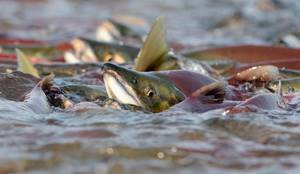
Lake trout primarily live in cold northern lakes and begin spawning in the fall. It comes out to spawn at the mouths of flowing rivers. Trout always spawn in pairs. The female digs a hole at the bottom and lays eggs there. The male fertilizes the eggs. After this, the female buries the eggs with small pebbles and sand so that no one can harm the embryos. The spawned trout does not die, but rolls back into the lake.
Brook trout do not migrate, but spawn in the same reservoirs where they live. It lays eggs under stones, under driftwood, and in various secluded corners. Several males can follow one female at once. But the eggs are fertilized by only one of them.
Rainbow trout spawn in Europe in the spring, and in Kamchatka and North America in the fall. Rainbow trout spawn in shallow water, and to do this they rise to the upper reaches of rivers until they find a suitable place. For spawning, rainbow trout choose an area near the riffles. If there is no such place, then it can be swept away on large pebbles. Like previous species, rainbow trout uses its fins and tail to clear a place for future eggs. A male is hovering nearby, ready to begin fertilization at any moment. Once the trout's eggs are laid, the male does his job. A caring female covers the eggs with pebbles.
Sea trout enter river mouths to spawn. Spawning time also depends on territorial features. In most regions this happens in the spring, when the leaves are just beginning to emerge. Rivers literally “boil” when salmon go to spawn. Trout reaches sexual maturity by the age of three. Spawning of sea trout is also paired and occurs according to the same scenario as in river specimens.
What do trout eat?
The basis of the trout diet is insects, as well as their larvae. She happily eats amphipods, caddis flies, flies, grasshoppers, dragonflies, and various bugs. And not necessarily those that fell on the water. Our heroine is able to catch them by quickly jumping above the surface. In the spring, it comes close to the steep banks to feast on worms, larvae and other living creatures washed out of the ground by melt waters. Young trout mostly feed on zooplankton - small aquatic organisms that are unable to withstand the current. The little thing is unpretentious in its diet; it eats everything it considers edible, so it grows very quickly.
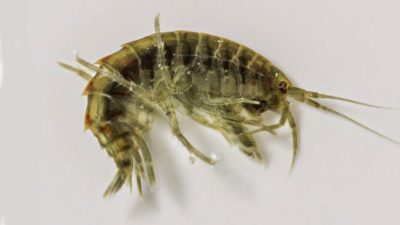
After reaching sexual maturity, this fish turns into a real predator. Now the first line in her menu is occupied by small freshwater fish like minnows or gobies, tadpoles and even fry of their own species, and worm bugs only complement the changed diet. A special place in it is occupied by caviar of other species. A large individual can attack small mammals that accidentally find themselves in the water or decide to swim across a body of water.
Trout is considered one of the most voracious representatives of the ichthyofauna. It feeds throughout the year with some exceptions. These are spawning and hot periods when the water temperature exceeds 20 degrees.
Breeding trout in fish farms
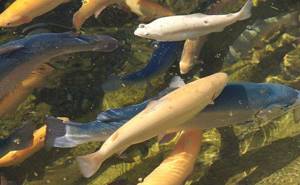
This tasty and expensive variety of salmon is of interest to fish farms and nurseries. Of all the species, only a small part is suitable for cultivation.
Recommended reading: Pike fish
Keeping in cages
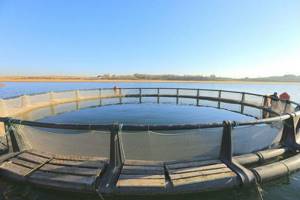
Keeping them in special cages is considered the most profitable way of growing. The cages are placed in a certain part of a suitable body of water. It's quite simple to do:
- In pre-marked places, wooden or metal stakes are driven into the bottom of the reservoir, which define the boundaries of the cage and will later serve as a frame.
- A strong fine-mesh mesh is stretched over the stakes. The size of the cell is selected so that trout fry cannot leave the cage area, but at the same time the fry of other fish and small aquatic life can easily penetrate.
- The diameter of such a structure is usually 15-20 meters, and the depth is about 5 meters. The bottom of the cage is located approximately one meter above the bottom of the reservoir.
Contents in the pond

Reservoirs, both natural and artificial, are suitable for growing trout in a pond. Moreover, natural ponds, in some cases, are inferior to artificial reservoirs specially dug for growing fish. This is explained simply:
- In a wild pond it is more difficult to create the necessary conditions for the life of fish that require clean water.
- A large natural reservoir cannot be completely cleared of trash fish and excess vegetation.
- On private property it is much easier to protect a pond from poachers.
The advantage of a natural reservoir is only the supply of natural food, which allows partial savings on feed. In a body of water of any type there must be at least a slight current that promotes constant mixing of oxygen in the water.
What to use to catch trout?
Actually, there are no special secrets in trout fishing. For such fishing, a float rod, fly fishing rod, spinning rod are suitable... the main thing is that the fisherman has good command of the chosen tackle and knows how to find a feeding flock. It is advisable to have several different baits with you, and it is also important to behave quietly on the shore so as not to spook the wary fish.
When fishing with a float rod, the bait can be:

worm (earthworm, dung);- larva (maggot, bloodworm);
- Red caviar;
- live or dead fish;
- cheese;
- corn.
Trout are extremely cautious, so the hook point should not stick out from the bait. This rule does not apply to live bait that is placed behind the lip or under the dorsal fin.
Fly fishing using artificial flies is considered a very effective method of fishing. The bait must accurately imitate a real insect, otherwise the fish will suspect a trick. In addition, you should choose your fly according to the season. If its living prototype has not yet flown out, for the object of fishing, this is also a reason to be wary. During periods of high activity, trout can grab a variety of flies, including exclusive ones that are not similar to any existing insect.
You can count on a good catch with a spinning rod. In this case, the main task of the fisherman will also be the correct selection of bait. Both in size and color. The castmaster has proven himself to be the best, but you shouldn’t get hung up on him. It’s better to make a series of experimental casts with different baits, because spinners often turn out to be more effective than spinners
. The arsenal should also include different types of wobblers that are convenient for fishing different horizons. For example, if trout are attacking fry on the surface, a popper is best for catching them.
Nutritional value and taste
Tender and healthy trout meat is a recognized delicacy that no one will refuse. It lends itself to all known processing methods, from salting to steaming. In its raw form, it is used to prepare sushi, sashimi, tartare, delicious sandwiches, and it makes fish soup and other fish soups incredibly appetizing.
As for the chemical composition of trout meat, the main compounds in it (except water) have the following percentage ratio:
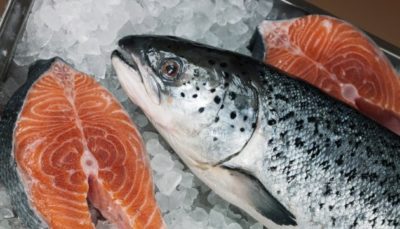
proteins – 80%;- fats – 20%;
- carbohydrates – 0%.
There are no carbohydrates at all, which allows us to consider this product dietary. It also contains a lot of useful vitamins, macro- and microelements, such as retinol, riboflavin, ascorbic acid, phosphorus, magnesium, calcium, zinc, selenium and others. This set brings many benefits to the human body: it normalizes metabolic processes, helps reduce the level of bad cholesterol, energizes, and improves brain activity.
Trout meat is not always a bright red color; it can have a pink or milky-cream hue, but in terms of taste it is in no way inferior to salmon. Chefs call its taste exquisite and do not forget to mention the intermuscular fat layer, which gives it a unique aroma.
Growing trout in artificial reservoirs
If you decide to breed trout, you must understand that simply organizing a pond for such fish is not enough. Judging by the photo, the size of the trout directly depends on the water. If you breed this species in sea water, the individuals will grow quickly and will be large; if the water is fresh, then the fish will be small in size.
The water in the reservoir should always be clean and cold. Under no circumstances should you use chlorinated water. Chlorine is toxic to trout. It is recommended to breed trout in cages - a metal floating frame that is attached to the shore. You can place the cages in any ready-made body of water: river, pond. Trout are released in quantities of 500-1000 individuals.

Trout do not breed in ponds, so broodstock are introduced there. You need to feed the fish natural food (at least 50%). Fry and young fish must be kept separately from large fish, otherwise they may be eaten.
You can buy trout from breeders on the Internet on specialized forums. Don’t forget that trout is a valuable fish and its price has not fallen for many years, but on the contrary, it has only been growing. The price for live trout varies from 7 to 12 dollars per 1 kilogram, depending on the species.
